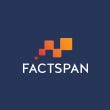According to the Retail Drive Group, retailers are potentially losing $1 trillion in sales from inventory out-of-stocks due to poor assortment planning or real-time tracking. For reference, the yearly revenue for the target corporation in 2019 was $77.1billion. So, now you can visualize how your business’s inability to predict the demand could lead to a huge loss of money.
Forecasting the demand helps retailers to answer salient questions such as how many units of goods are necessary to fill the inventory? How often does the unit of goods need replacement? The answers to these questions help retailers build a strategy that prevents future chaos and mismanagement in the supply chain. As you follow along you will read in detail about demand forecasting and how it solves retailers pressing issues.
Explaining Demand Forecasting
Demand forecasting uses predictive analytics to predict customer demand over time. By definition, demand is how much a consumer is willing to pay for the product. In a broad sense, demand tells what people want. For instance, through demand forecasting, key operation leaders could optimize the supply chain by predicting future sales.
Predictive analytics at its core is an application of machine learning for business problems. Moreover, in the context of demand forecasting, predictive analytics systems learn from data to render predictions for each retailer. It is a revolutionary step for the next generation of business problem solvers.
Furthermore, the size of the retail organization also plays a pivotal role in opting for which type of demand forecasting could be useful. To illustrate, when a retail company is at a starting stage or aiming to scale its operation active demand forecasting can be a good option. Startups have little to no historical data to take into consideration. Hence, retailers can analyze external data such as economic outlook, growth projections for your market sector, and projected cost savings from supply chain efficiencies. Eventually, basing their assumptions on the external data to carve out strategies.
Read more about the retail sector Could Cybersecurity Save Retail Businesses?
How to Forecast “Out of Stock” Products?
In the world of retailers, there is a goldilocks rule which says don’t stock little because it could mean loss of potential revenue. But the big question is how much is too much in the stock inventory? Even more so, millions of products have individual demand lifecycles. So, building a technical infrastructure to predict the demand for each product may become overwhelming.
To overcome these problems, machine learning models now have the capability to evaluate big data such as historical inventory patterns and customer demand patterns. Moreover, retail leaders can visualize the time series forecasts in a dashboard. These visualizations can eventually answer the approximate demand of each product in different seasons for a definite time span. Additionally, there are some tips to refine your demand forecasting:
- For higher forecast accuracy, properly track and store transactional and external data.
- Regularly adjust the forecast to better predict the fluctuations shortly.
- Adopt automation as it increases inventory efficiency and lowers human error.
In conclusion, as more retailers depend on demand forecasting for their inventory needs. More advanced versions of forecasting techniques may be available in a short time. For instance, consumer behavior changed overnight with the onset of the pandemic. The demand for health-related goods and safety products suddenly became the purchase driver. Hence, the future is in the hands of data as the shift in the purchase patterns enhances data dependency.
